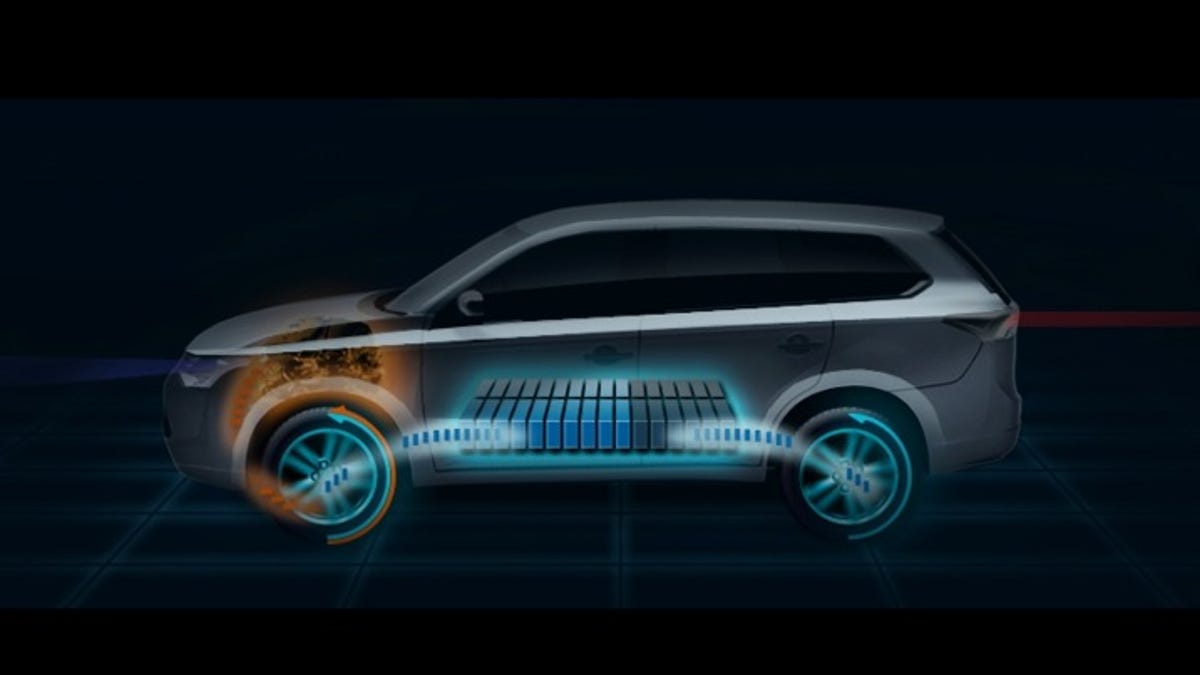Finally, a plug-in hybrid with four-wheel-drive is coming
Mitsubishi confirmed that the plug-in hybrid 2013 Mitsubishi Outlander is headed to the Paris Motor Show, then to the U.S. for sale.

News leaked out early today that Mitsubishi will debut its upcoming plug-in hybrid Outlander SUV at the 2012 Paris Motor Show.
Although there is no official news release or announcement from Mitsubishi, Edmunds InsideLine confirmed with a company spokesperson that the SUV is headed to the auto show next fall. It also confirmed that U.S. buyers will get the vehicle either in late 2013 or 2014.
The plug-in hybrid will be based on the 2013 Mitsubishi Outlander, and will have three driving modes, including all-electric, serial hybrid, and parallel hybrid. Based on the PX-Miev II Concept that debuted at the 2011 Tokyo Motor show, it's powered by a 2-liter 70kW engine, two 60kW electric motors, and a 72 cell lithium-ion battery pack. It will have an approximate 30-mile all-electric driving range, and a total driving range of approximately 500 miles on a full tank with the batteries charged.
This news would make the Mitsubishi Outlander the first SUV to enter the U.S. market with a plug-in hybrid powertrain. It is also the first plug-in hybrid vehicle to be equipped with permanent four-wheel-drive. The model will be an attractive buy for cold-weather dwellers who want a jack-of-all-trades vehicle with electric drive capability.
Although overseas car prices don't always translate, Australian news outlet Herald Sun says that the plug-in Outlander will be $5,000 more than the internal combustion-engine-equipped SUV. That steep premium means that car buyers won't be choosing this SUV to save money in the long run. But it may be a price drivers are willing to pay to ease their conscience. This combination of fuel efficiency and utility could be the right recipe for U.S. car buyers who are looking to reduce fuel consumption, but not limit where they go or what they can do with their car.
Source: Edmunds InsideLine

